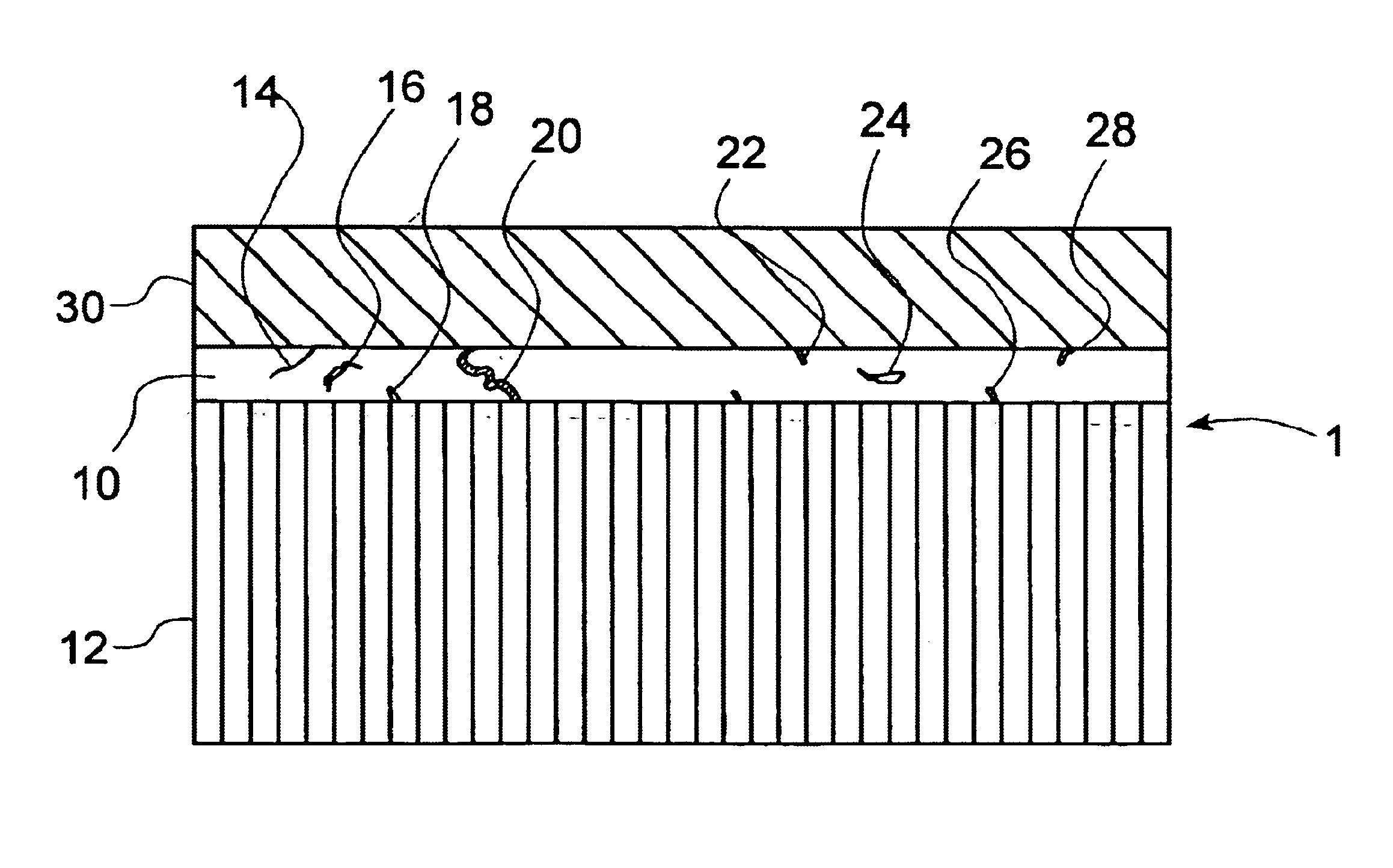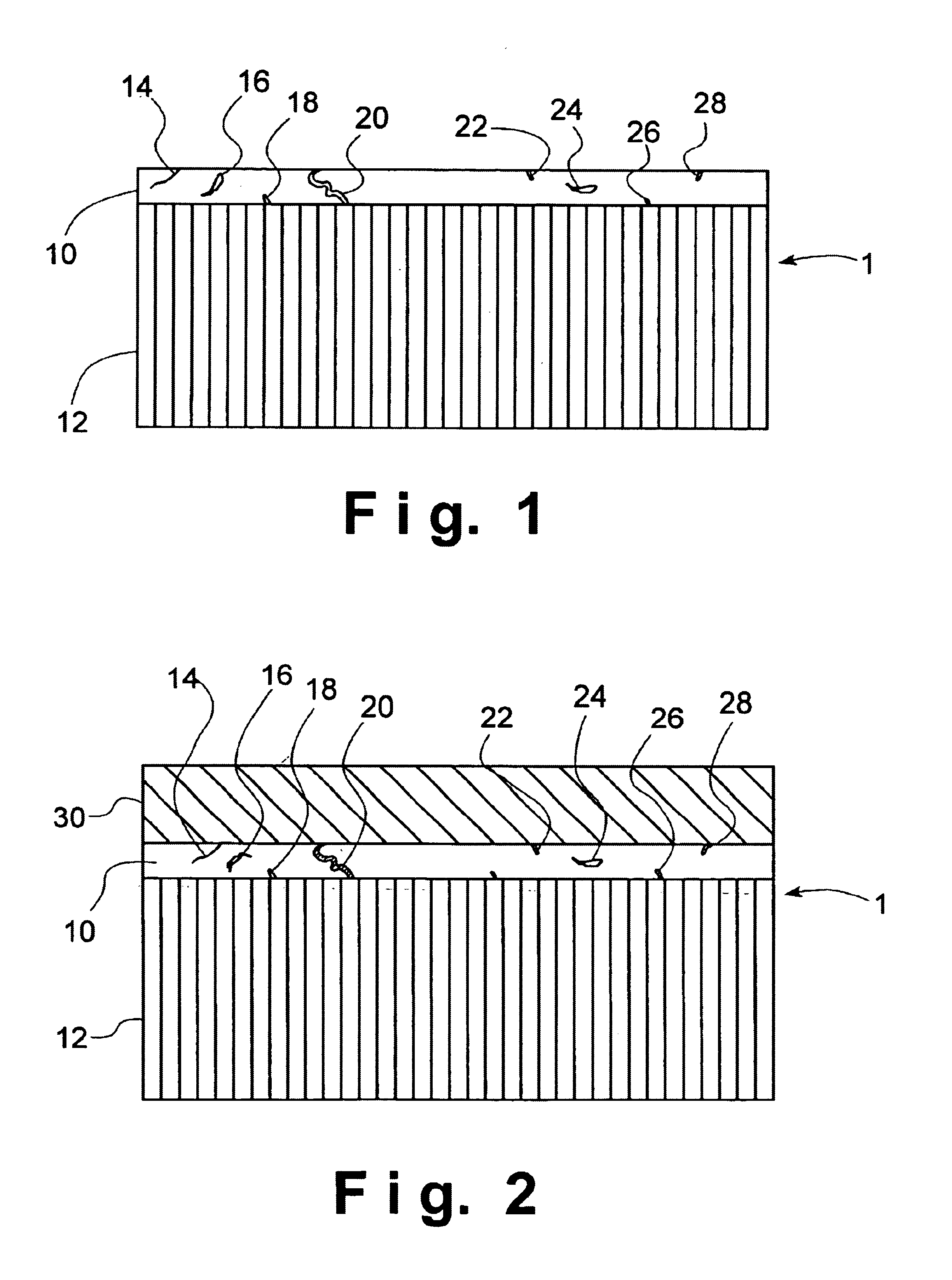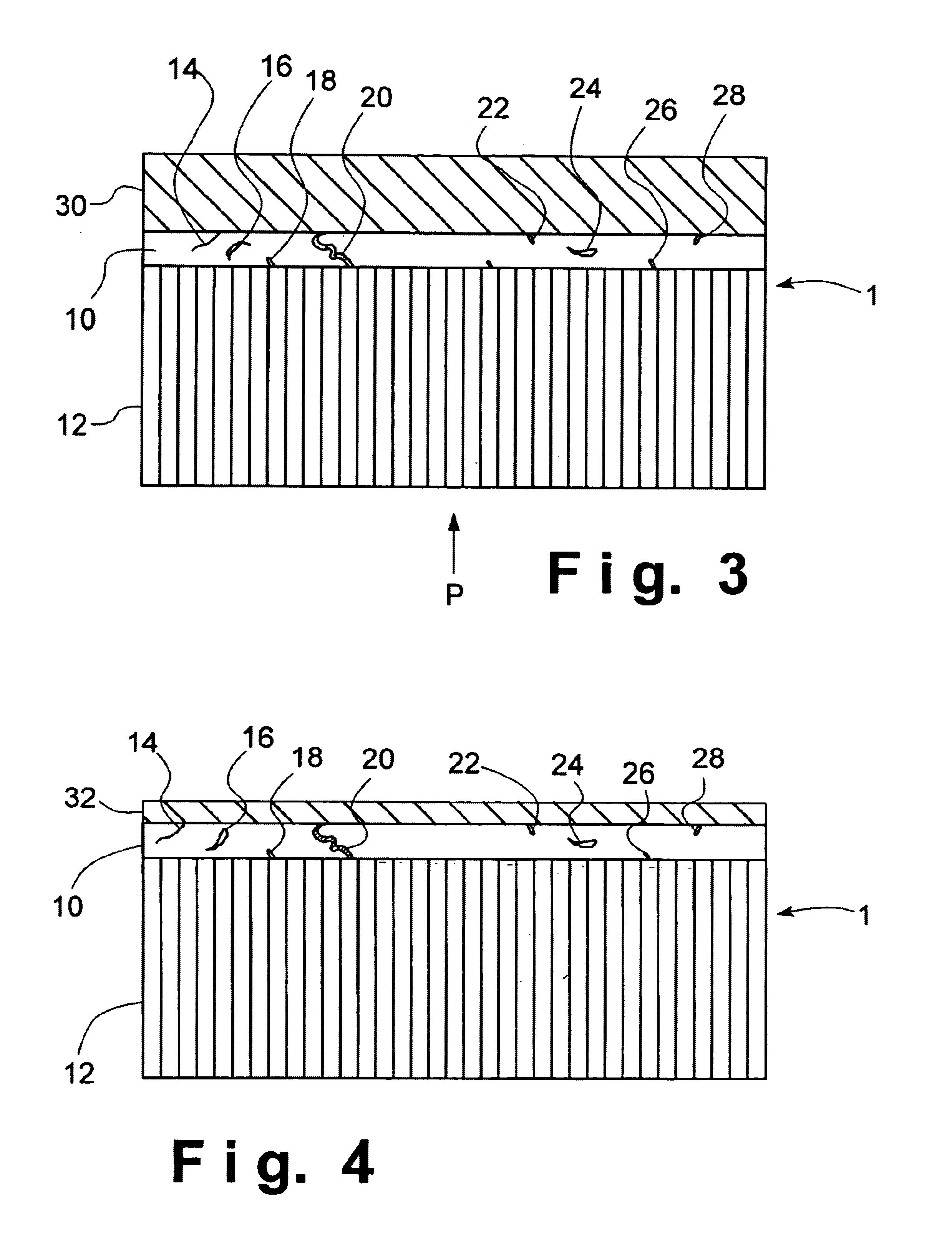Method of manufacturing an electrolytic cell
a manufacturing method and electrolytic cell technology, applied in the field of manufacturing electrolytic cells, can solve the problems of low production yield, less than 40%, and prone to shorting of electrolytic cells after sintering, and achieve the effect of preventing shorting between the anode and the cathode layer
- Summary
- Abstract
- Description
- Claims
- Application Information
AI Technical Summary
Benefits of technology
Problems solved by technology
Method used
Image
Examples
example 1
An electrolytic cell was fabricated in accordance with prior art techniques and without utilization of the present invention. The intermediate sintered form produced in the manner outlined above, was dipped into a slurry solution containing LSCF and allowed to soak for a few seconds. The coated tube was then carefully drawn out of the slurry and allowed to partially dry in a fume hood for about 5 minutes. Thereafter, the tube was completely dried in an oven at a temperature of about 200° C. for abut 30 minutes. The dried tube was finally loaded into a furnace and heated at about 1° C. per minute under ambient air to about 450° C. and held at such temperature for about 1 hour to remove the organic binder in the coating. The heating ramp was increased to 2° C. per minute to about 900° C. for 4 hours to sinter the coating. The furnace was cooled to room temperature at the rate of 2° C. per minute. The cathode layer 30 prepared in this manner was found to be porous with a porosity of fr...
example 2
An electrolytic cell was fabricated in accordance with the current invention. The sintered intermediate tube was formed in the manner outlined above and a cathode layer 30 was applied in the manner outlined in Example 1. The tube was attached to an air source and 4 psi pressure was applied to the inside of the tube which was maintained during the entire processing steps of Example 1. The cathode coating prepared this way was found to be porous with a porosity of between about 30% and about 40% and a thickness of about 50 microns.
The resultant electrolytic cell was then evaluated for shorting by performing a RT resistance test. The resistance was found to be 3.7 MΩ. The electrolytic cell was considered to be non-electrically shorted and therefore passed inspection.
example 3
A sintered intermediate form was prepared in the manner described above and was attached to an air source. A 4-psi pressure was applied to the inside of the tube. The tube was then dipped into a slurry solution containing about 50% by weight of LSCF and about 50% by weight of Ag. After a few seconds had elapsed, the coated tube was carefully drawn out of the slurry and allowed to partially dry in a fume hood for about 5 minutes. The tube was completely dried in an oven of about 200° C. for about 30 minutes. During the entire drying process, the air pressure inside the tube was maintained at about 4 psi. The dried tube was disconnected with the air source and loaded into a furnace. It was heated at about 1° C. per minute in ambient air to about 450° C. and held at such a temperature for about 1 hour to remove the organic binder in the coating. The heating ramp was increased to about 2° C. per minute to about 900° C. and held for 4 hours to sinter the coating. The furnace was cooled t...
PUM
| Property | Measurement | Unit |
|---|---|---|
| thickness | aaaaa | aaaaa |
| thickness | aaaaa | aaaaa |
| size | aaaaa | aaaaa |
Abstract
Description
Claims
Application Information
 Login to View More
Login to View More - R&D
- Intellectual Property
- Life Sciences
- Materials
- Tech Scout
- Unparalleled Data Quality
- Higher Quality Content
- 60% Fewer Hallucinations
Browse by: Latest US Patents, China's latest patents, Technical Efficacy Thesaurus, Application Domain, Technology Topic, Popular Technical Reports.
© 2025 PatSnap. All rights reserved.Legal|Privacy policy|Modern Slavery Act Transparency Statement|Sitemap|About US| Contact US: help@patsnap.com



